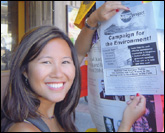David Brower, a pioneer of the U.S. environmental movement, once said that his generation depended on young people “to shape us up before it’s too late.”
Though Brower — former executive director of the Sierra Club, founder of Friends of the Earth and the Earth Island Institute — passed away in 2000, his legacy lives on: He established the Brower Fund, which cultivates new environmental leaders through the annual Brower Youth Awards. Award winners — aged 13 to 22 — are chosen by a panel of activists organized by the Earth Island Institute. They get a $3,000 prize, and ongoing advice and mentoring from top environmental activists.
This year’s six winners are diverse in their activities; they’re defending old-growth forests, promoting clean energy, helping get environmental protection back onto the national agenda — and, of course, doing all they can to shape up their elders.
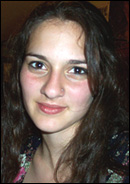
Shadia Wood.
Photo: Earth Island Institute.
Shadia Wood
When Shadia Wood was 2 years old, her hometown of Newport, N.Y., was targeted for a landfill. Just before a local protest against the project, her mother cut eyeholes and armholes in a paper bag, added the slogan “Don’t Dump on Me,” and declared her daughter ready for some political theater. “That was my first action,” says Wood, who at age 17 is now an experienced environmental activist.
She’s served as the national youth spokesperson for the group Kids Against Pollution. She also spent nearly five years lobbying for the refinancing of the New York State Superfund, a program intended to clean up the state’s worst contaminated sites. Wood takes a strong stand against toxic waste: “It will affect me one day, and it will affect our children. I don’t want the world to be more contaminated than it was when I came into it.” Wood made repeated trips to the statehouse, lobbying in support of the Superfund bill. And in an ingenious bit of activism, her group held bake sales and ran lemonade stands to earn toxic-waste cleanup dollars. “We’d send the money we raised to the governor and tell him it was for the Superfund,” she says. Dedication paid off, and the Superfund bill became law in 2003. “I never really thought it would pass,” says Wood. “When it did, I was so amazed, and then I thought, ‘OK, what’s the next bill?'”
As Wood enters her senior year of high school, she’s joined a campaign to beef up New York’s bottle bill.
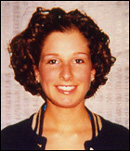
Hannah McHardy.
Photo: Earth Island Institute.
Hannah McHardy
When Hannah McHardy learned that the ancient temperate rainforests near her Seattle home were among the most endangered forests on the planet, she decided to make activism part of her education. With the help of one of her Nova High School teachers, David Goldman (“a huge inspiration and motivator,” she says), she started a student group called Eco-Justice. The group joined a Rainforest Action Network campaign to convince Seattle-based Weyerhaeuser Co. to stop cutting old-growth trees. Group members also researched paper use at Nova High School, then located a company that was willing to supply the school with affordable recycled paper. When the students presented their study results to administrators and fellow students, the school promptly adopted a new paper policy: Nova now uses only 100 percent post-consumer waste, non-chlorine bleached paper.
McHardy, 18, hasn’t slowed down since then. She’s spending this summer on the Arctic Sunrise, a Greenpeace boat campaigning against logging in the Tongass National Forest. “I’ve learned so much, mostly by being around the incredible international crew,” she wrote in an email to Grist. “Some of them have been activists longer than I’ve been alive, and they have mad stories, great advice, and the patience to teach me new things.”
After she returns to Seattle later this month, she plans to spend a year as a full-time activist, probably continuing her work with the Rainforest Action Network’s Weyerhaeuser campaign. Then she’ll head off to college, where she hopes to study environmental education.
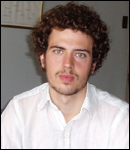
Billy Parish.
Photo: Earth Island Institute.
Billy Parish
You might say that Billy Parish is majoring in activism: Since his first year at Yale University, he’s been deeply involved with the student environmental movement. By the time he became co-chair of the Yale environmental group, he’d developed a particular interest in clean energy and energy-policy reform, and he started thinking big. “I realized there were a lot of great groups working on energy issues throughout the region, but the work wasn’t being coordinated,” he says. So in 2003, he founded the Climate Campaign, an umbrella group of 10 student organizations representing about 125 college campuses throughout the Northeast. Though these groups may disagree about strategy and philosophy, they’ve settled on a common goal: greater use of wind power and other clean-energy sources on their home campuses.
“Climate change is a gigantic global issue, and sometimes it’s hard for people to see how they can have an impact,” says Parish. “But if we take it from the global to the local, someone can say, ‘I don’t know what I can do in a large sense, but if I can get my campus to use clean energy, that’s important.'” Three colleges in Maine already use 100 percent clean energy, and members of the Climate Campaign hope their network will increase the momentum of the green-campus movement. A February 2004 Northeast Climate Conference at Harvard University attracted more than 400 students from throughout the region.
Parish, now 22, has taken time off from school to work full-time for the campaign. “I feel like this is work that needs doing now, and I love it,” he says.
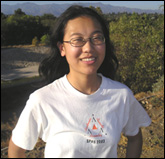
Lily Dong.
Photo: Earth Island Institute
Lily Dong
Sixteen-year-old Lily Dong lives in South Pasadena, Calif., where nature can sometimes seem very far away. But that feeling changes when Dong visits Arroyo Seco, a canyon that holds some of the last undeveloped habitat within the city. “When I go down there, I can feel peace,” she says. “It doesn’t have all the pretense and noise of the city — nature is really accepting.”
Dong first visited the canyon in seventh grade, about a year after she and her family first arrived in the U.S. from China. As part of the Arroyo Field Science Team, she and her schoolmates documented the arroyo’s elderberries, sycamores, live oaks, and other plants and animals. A year later, when the program faltered from lack of interest, she persevered; she was the only student to help the group’s advisor continue his scientific work in the canyon. As a first-year high school student, Dong restarted the club, eventually boosting membership to 20 students. The revitalized group recently helped convince the South Pasadena City Council to protect a four-acre area as the Arroyo Seco Woodland and Wildlife Park, slated to open to the public this September. Dong and her group plan to stay involved with the study and restoration of the area. And Dong hopes to continue her adventures in nature.
“I’m really interested in environmental work — I want to be an ecologist,” she says. She also wants to explore some of the West’s big wilderness areas, but first, she says, she’ll have to get her driver’s license.
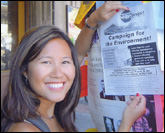
Christina Wong.
Photo: Earth Island Institute.
Christina Wong
In his 2004 State of the Union address, President Bush made only a single passing reference to conservation issues. The day after the speech, University of California-Berkeley junior Christina Wong responded with an announcement to her environmental politics class: She was the campus recruiter for the national League of Conservation Voters, and she was looking for help. “People were pretty riled up” by the president’s failure to address environmental issues, she remembers, and five of her classmates agreed to pitch in. The small group set up tables on campus, buttonholed students throughout the spring, and asked them to volunteer for the LCV’s summer campaign in the swing states of Florida, New Mexico, Oregon, and Wisconsin. By the end of the semester, Wong and her crew had signed up 20 students for a total of 63 weeks of swing-state canvassing.
President Bush’s record came to Wong’s aid on the campaign trail as well: “Most people don’t know that Bush got an ‘F'” from the LCV, she says. “It immediately opens their eyes when they hear it. They say, ‘Wow, what is the President doing to earn an ‘F’?”
Wong, who has interned at the state capitol in Sacramento and with the Natural Resources Defense Council, says she will continue her environmental work after graduation next year — even though grassroots organizing has its tough moments. “You get ignored 80 percent of the time,” she says. “It bugs you to get rejected, but it makes up for it when you get someone who’s really interested.”

Eugene Pearson.
Photo: Earth Island Institute.
Eugene Pearson
University of Colorado student politician Eugene Pearson knows how to drive a hard bargain. When the school’s administration proposed a hefty student fee increase to pay for the construction of a new university law school and three other campus buildings, Pearson defended both his constituents and the environment. The student government — which is required to approve all student fee hikes — agreed to pay the bill, but not without concessions.
“We said, ‘Let’s do this on the students’ terms,'” says Pearson, a Wisconsin native who was then vice president of the student union legislative council. “We wanted [the building project] done green, and we wanted it to be conscious of labor issues.” Negotiations led to the administration’s agreement to make all four new buildings meet the “silver” standard of the U.S. Green Building Council’s Leadership in Energy and Environmental Design building rating system, with 1 percent of building costs going toward meeting the even higher LEED gold standard. The university also agreed to pay project workers a living wage, and to earmark 20 percent of the new fee for student financial aid. Though the student body didn’t vote on the fee increase and green-building plans, several thousand students testified during a public comment period, with supporters outnumbering opponents by 4-to-1.
Pearson, 21, is now president of the student union legislative council, and will graduate with a molecular biology degree in the fall of 2005. Ultimately, he says, he’d like to help bridge the worlds of science and politics, perhaps as a policy adviser on Capitol Hill.
